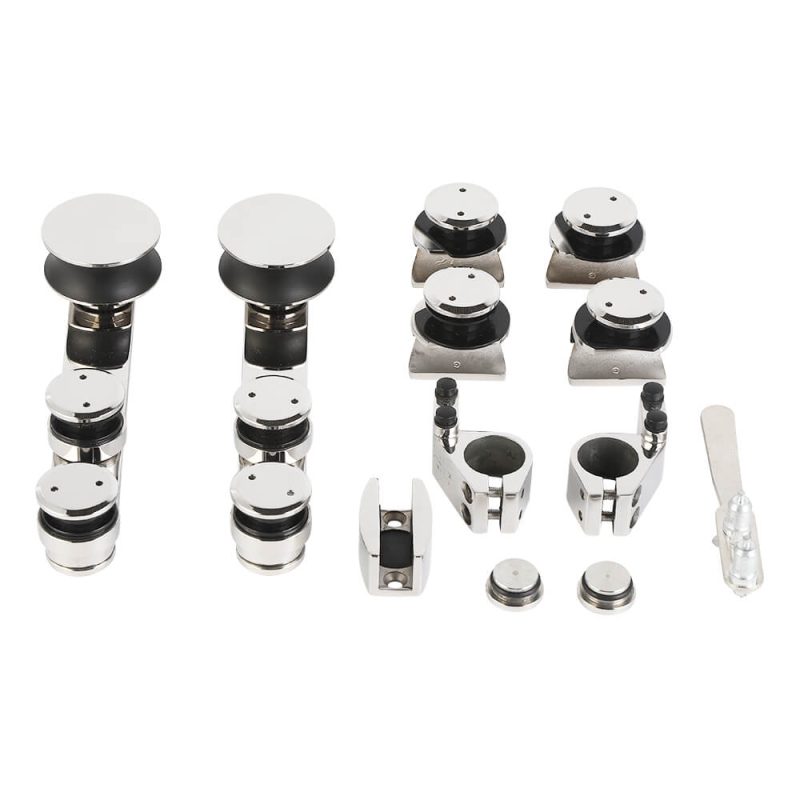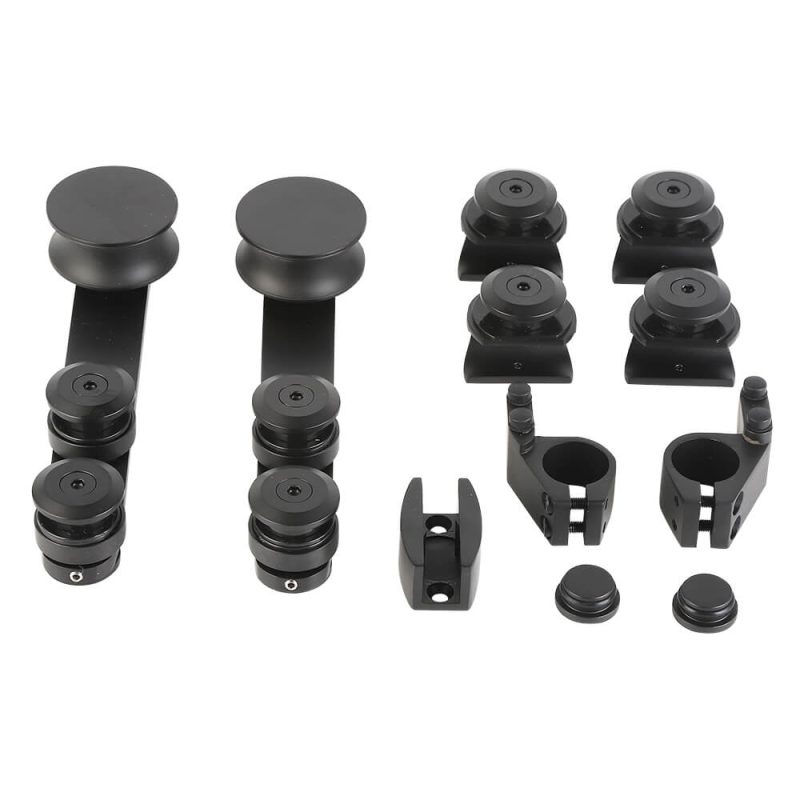A Guide to Commercial Glass Door Handle Size Ratio Selection Standards
The selection of a handle for a commercial glass door is a critical decision that sits at the intersection of aesthetics, functionality, and safety. While material and finish are often the first considerations, the size and proportion of the handle are equally vital. Unlike residential doors, commercial entrances must withstand high traffic, comply with accessibility codes, and project a specific brand image. This article outlines the key standards and principles for selecting the correct handle size ratio to ensure a successful installation.

The Core Principle: Balance and Proportion
The fundamental goal is to achieve a balanced proportion between the handle and the door itself. A handle that is too small can look insignificant, be difficult to grasp, and even feel flimsy. Conversely, a handle that is too large can appear bulky, overwhelming the sleek appearance of the glass and potentially unbalancing the door’s structure.
Key Factors Influencing Size Ratio Selection
There is no single universal measurement, but a set of interrelated factors guide the selection process.
1. Functionality and Ergonomics (The Human Factor)
This is the most critical standard. The handle must be comfortable and easy to use for the vast majority of people, including those with disabilities.
Grip Diameter: The cross-sectional diameter of the handle bar (the part you grip) is crucial. A diameter between 32mm (1.25 inches) and 38mm (1.5 inches) is generally considered ideal for a secure and comfortable grip for most hand sizes.
Projection from Door: The handle must project sufficiently from the door surface to allow a hand to grasp it without scraping knuckles against the glass. A projection of 40mm (1.5 inches) to 60mm (2.25 inches) is standard.
Lever Length: For lever-style handles, the length must provide enough leverage for easy operation. A typical length ranges from 150mm (6 inches) to 250mm (10 inches) . The longer end of this range is often used for pivot doors or heavier doors to provide more mechanical advantage.
2. Door Size and Weight
The handle’s dimensions should be scaled to the door.
Standard Single Door: For a standard 900mm (36 inch) wide door, a handle length of 200mm to 250mm is common and visually proportional.
Large or Double Doors: For oversized or double-door applications, a longer handle (e.g., 300mm or 12 inches) may be necessary to maintain visual scale and provide a clear “pull” point.
3. Aesthetic and Design Intent
The handle contributes significantly to the building’s architectural style.
Minimalist/Modern: A thinner, longer handle with a clean profile is often chosen. The ratio here favors a sleek, horizontal line that emphasizes the glass.
Traditional/Classical: A handle with more substantial massing, perhaps a thicker grip diameter and more ornate ends, may be used to create a sense of solidity and heritage.
4. Compliance with Building Codes and Accessibility
In many regions, building codes (such as the ADA in the United States) dictate specific requirements for operable parts.
Operability: Handles must be operable with one hand without requiring tight grasping, pinching, or twisting of the wrist. This is why lever handles are standard over round knobs.
Clearance: Codes specify the required clear floor space in front of the door, which indirectly affects how the handle is approached and used.
Practical Selection Standards and Ratios
While measurements are primary, thinking in ratios can be helpful:
Lever Length to Door Width Ratio: A common rule of thumb is that the handle length should be roughly 1:4 to 1:3 the width of the door leaf. For a 1000mm wide door, this suggests a handle between 250mm and 330mm.
Grip Diameter to Lever Length Ratio: The grip diameter should be substantial enough to feel secure but not so thick that it looks clumsy. A ratio of approximately 1:6 to 1:8 (diameter to length) often provides a balanced look.
Conclusion
Selecting the correct size and ratio for a commercial glass door handle is a nuanced process that cannot be overlooked. By prioritizing ergonomic comfort, scaling the handle to the door’s size, adhering to accessibility codes, and aligning with the overall design vision, specifiers and architects can ensure that the handle is not just a functional component, but an integral part of a safe, welcoming, and aesthetically pleasing commercial entrance. The most successful handle is one that users don’t think about at all—it simply feels right and works perfectly.
-
Shower Glass Clips Hardware: The Ultimate Guide to Choosing, Installing, and Maintaining
05-12-2025 -
What Are the Different Types of Shower Screen Glass Clamps and How to Choose?
26-11-2025 -
Clip-On Shower Door vs. Traditional Hinges: Which Is Better?
21-11-2025 -
Stainless Steel vs. Brass: The Best Choice for Your Shower Door Clips
19-11-2025 -
Clamp vs Channel: How to Choose the Right Shower Glass Bracket
18-11-2025
-
What Does the Lock Retainer Clip Do in a Glass Office Door Mechanism?
04-12-2025 -
What are the standard dimensions and material specs for door handle linkage clips used in frameless glass doors?
03-12-2025 -
What Are Frameless Shower Glass Clips and Why Are They So Important?
28-11-2025 -
Which material of frameless shower clips is most durable for commercial projects?
27-11-2025 -
What load-bearing capacity do glass clamp hinges need for office partitions?
25-11-2025










